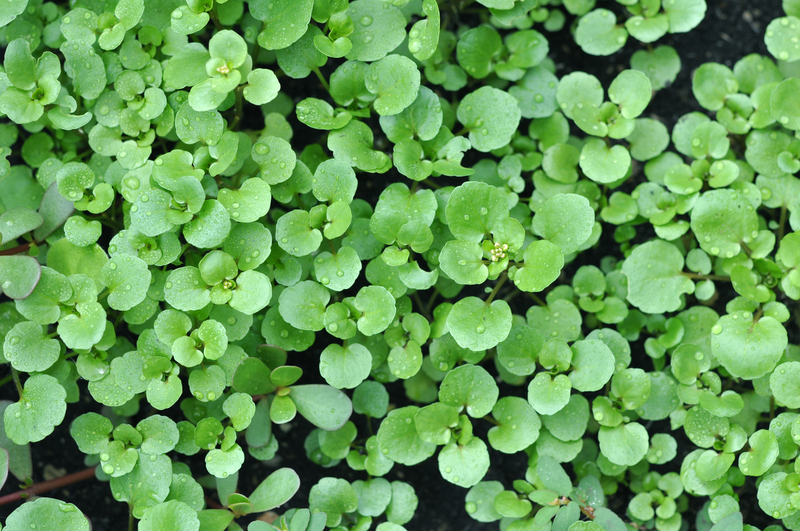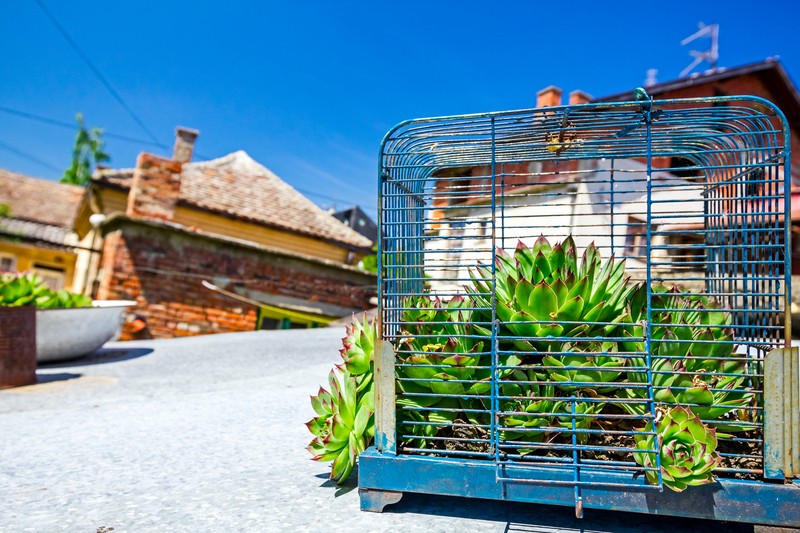Rooting for Success: 9 Tips for Budding Green Thumbers
Posted on 03/09/2025
Rooting for Success: 9 Tips for Budding Green Thumbers
Whether you're an aspiring green thumb or just want to make your home a greener place, starting your gardening journey can be both exciting and a little daunting. However, with the right knowledge and approach, anyone can nurture their plant passion into flourishing success. This comprehensive guide offers nine essential tips to help you develop a thriving garden, both indoors and out. Let's unlock the secrets to gardening success together!
1. Know Your Plants: Choose Wisely for Your Space
One of the most common mistakes new gardeners make is choosing plants that aren't suited to their environment. Before making any purchases, assess the conditions in your home or yard:
- Light Levels - Does your space get direct sun, partial shade, or mostly shade?
- Temperature - Are there dramatic swings, or is it relatively consistent?
- Humidity - Is the air dry or moist?
Some hardy varieties, like spider plants and pothos for indoors, or marigolds and zinnias for outdoors, are beginner-friendly and forgiving. Don't hesitate to start small and add complexity as your confidence grows.
Helpful Hint:
Label your plants when you bring them home so you can monitor their needs and progress.

2. Prepare the Soil for Happy, Healthy Roots
The foundation of any successful garden is quality soil. Healthy soil encourages strong root growth and helps your plants access the nutrients they need.
- Test your soil for pH and nutrient composition, especially if you're planting outdoors.
- Amend with compost, peat moss, or perlite to improve texture and fertility.
- For indoor plants, choose a well-draining potting mix suited to your specific plant type.
Invest a little time in prepping your planting site, and your plants will thank you with faster growth and fewer problems down the road.
3. Water Wisely -- Not Too Much, Not Too Little
The frequency and amount of watering is one of the trickiest aspects for new gardeners and plant owners. Every plant has distinct water needs, and overwatering is just as damaging as underwatering.
- Water deeply and infrequently to encourage roots to seek out moisture.
- Let the top inch of soil dry out before watering most indoor varieties.
- Check outdoor gardens regularly during hot spells, but avoid soggy conditions.
Tip: Use your finger or a soil moisture meter to check dampness, rather than relying on a set schedule.
4. Feed Plants for Vibrant Growth
Just as we need a balanced diet, so do our garden companions. Fertilizers help replenish nutrients in the soil, encouraging lush leaves and flowers. Here's how to feed your plants for rooting success:
- Choose the right fertilizer -- some plants prefer slow-release granules, others like liquid feeds.
- Follow the instructions carefully to avoid burning roots.
- Feed more frequently during active growth seasons (spring and summer).
Remember, less is often more; over-fertilizing can do more harm than good. Observe your plant's response and adjust as needed.
5. Light It Right: Master Natural and Artificial Lighting
Light is the fuel for photosynthesis, the process that helps plants grow. Giving your plants enough -- but not too much -- sunlight or artificial lighting is crucial.
- South-facing windows offer the strongest light indoors; east and west are moderate.
- Rotate pots so all sides get even exposure.
- If natural light is lacking, supplement with grow lights for robust, year-round growth.
Pro Tip: Different plants have different light needs. Ferns thrive in shade, while succulents need plenty of sunshine. Dramatic changes can stress plants, so move them gradually if you need to increase or decrease light exposure.
6. Prune, Pinch, and Deadhead for Healthy Plants
Routine maintenance isn't just about keeping your garden tidy. Pruning and deadheading encourage new shoots and more blooms, and help prevent pests and diseases. Here's how to keep your green thumb working efficiently:
- Remove dead or discolored leaves regularly.
- Pinch off spent blossoms to encourage more flowering.
- Prune back leggy growth to promote bushier, healthier plants.
Always use sharp, clean scissors or pruners to minimize damage and reduce the chance of infection.
Did You Know?
Consistent pruning not only shapes your plants but also improves air circulation, reducing the risk of mildew and rot.
7. Plant for Your Climate: Work With (Not Against) Nature
Success in gardening often comes down to choosing plants that are well-adapted to your area. Every region has its own climate quirks, from temperature swings to rainfall patterns.
- Check your USDA Hardiness Zone or local climate maps before planting outdoors.
- Pick native species -- they're adapted to thrive in your local ecosystem.
- Try drought-tolerant options if you live in a dry area.
By working with nature instead of against it, you'll find your efforts more rewarding and your garden less high-maintenance.
8. Protect Against Pests and Disease the Natural Way
Nothing tests a new green thumber like battling bugs and blight. While no garden is ever entirely pest-free, there are eco-friendly ways to minimize damage:
- Inspect plants regularly for signs of trouble (holes, spots, or sticky residue).
- Encourage natural predators like ladybugs, lacewings, and birds.
- Avoid overhead watering, which can spread fungal diseases.
- If needed, use organic sprays or simple soap solutions to control pests.
Remember, tough plants and healthy soil are your best defense against most problems!
9. Cultivate Patience, Observation, and Joy
Of all the tips for budding gardeners, perhaps the most important is to enjoy the journey. Plants grow at their own pace, and every garden faces its setbacks.
- Take time each week to observe your plants, noting changes and growth.
- Celebrate the milestones -- your first flower, a new sprout, or a bumper harvest.
- Learn from mistakes and don't be discouraged; even expert green thumbs lose a plant now and then.
By connecting with your garden regularly, you'll develop a deeper understanding of plant needs and the rhythms of nature. Your patience will be rewarded with confidence and lush, living beauty.
Bonus Tip: Join the Gardening Community
Don't go it alone! Connecting with other plant lovers -- whether online or in your neighborhood -- opens up a wealth of shared knowledge and inspiration. Ask questions, share successes (and failures), and swap plants to expand your backyard or indoor jungle.

Essential Tools for Budding Green Thumbers
You don't need every fancy gadget to start gardening, but a few basics help ensure rooting for success:
- Watering can or hose with a fine spray
- Sharp pruning shears
- Hand trowel and fork
- Gloves
- Labels or markers
- Organic fertilizer
- Compost bin or bag
Investing in quality tools pays off in the long run, making gardening easier and more enjoyable.
Conclusion
Developing a green thumb is a gratifying endeavor, rich in learning and fulfillment. By following these nine foundational tips -- from understanding your plants and their environments to nurturing their roots and embracing the journey -- you'll set yourself up for gardening success that grows season after season. Rooting for success is more than a clever saying; it's a sustainable, joyful way of life.
Are you ready to dig in and let your garden thrive? With a little curiosity and care, anyone can become a flourishing green thumber!

